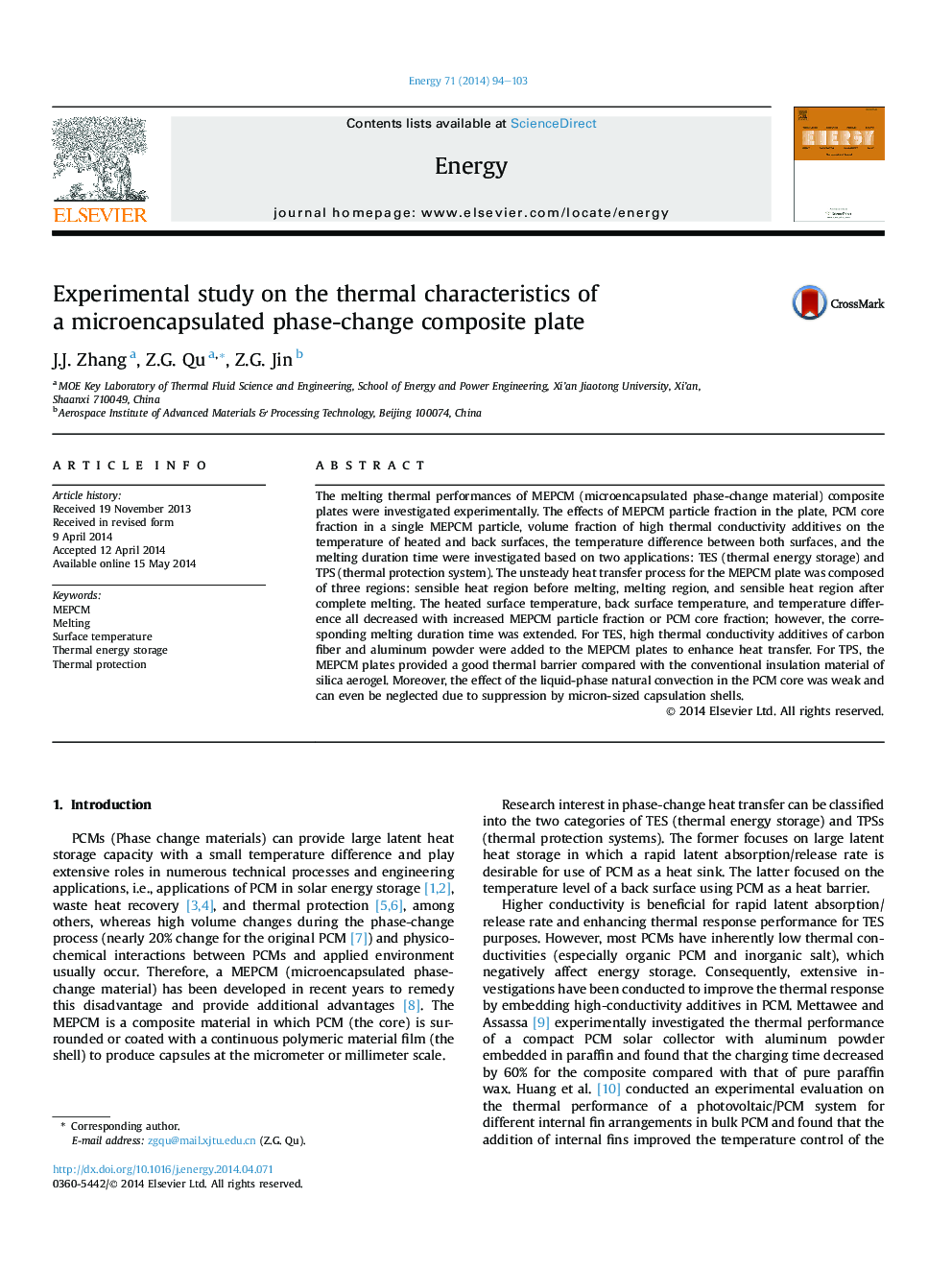| Article ID | Journal | Published Year | Pages | File Type |
|---|---|---|---|---|
| 1732376 | Energy | 2014 | 10 Pages |
•Increase in particle fraction or PCM core fraction decreased the surface temperature.•Carbon fiber and aluminum powder enhanced heat transfer across MEPCM plates.•MEPCM plate showed good thermal performance for thermal protection system.•Encapsulation highly suppressed natural convection in PCM core.
The melting thermal performances of MEPCM (microencapsulated phase-change material) composite plates were investigated experimentally. The effects of MEPCM particle fraction in the plate, PCM core fraction in a single MEPCM particle, volume fraction of high thermal conductivity additives on the temperature of heated and back surfaces, the temperature difference between both surfaces, and the melting duration time were investigated based on two applications: TES (thermal energy storage) and TPS (thermal protection system). The unsteady heat transfer process for the MEPCM plate was composed of three regions: sensible heat region before melting, melting region, and sensible heat region after complete melting. The heated surface temperature, back surface temperature, and temperature difference all decreased with increased MEPCM particle fraction or PCM core fraction; however, the corresponding melting duration time was extended. For TES, high thermal conductivity additives of carbon fiber and aluminum powder were added to the MEPCM plates to enhance heat transfer. For TPS, the MEPCM plates provided a good thermal barrier compared with the conventional insulation material of silica aerogel. Moreover, the effect of the liquid-phase natural convection in the PCM core was weak and can even be neglected due to suppression by micron-sized capsulation shells.
